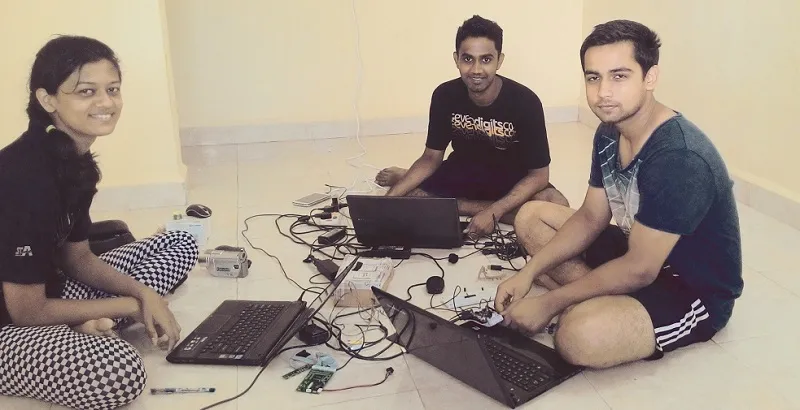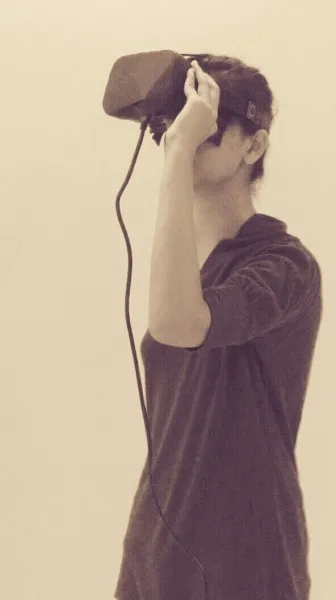BITS Pilani Goa students develop a virtual reality headset, launch a startup Absentia
BITS Pilani is known for its entrepreneurial culture. The college has many successful alumni in the startup industry like the founders of redBus, Exotel, Zivame, and Blume Ventures, etc. It also has a course in ‘New Venture Creation’ which is supported with a fund to invest in startups from BITS. This culture has allowed the students to dream and go after them.

To demonstrate what we’re talking about, meet Shubham Mishra, Vrushali Prasade and Harikrishna Valiyath, students from third year at BITS Pilani Goa Campus. The trio has built a Virtual Reality Headset- Tesseract under the company name Absentia.

Yes, think on the lines of Oculus, the virtual reality company that Facebook bought for $2 billion. An inspiration for sure, but while Oculus Rift currently deals with 3D gaming, the trio at Absentia wants to apply their headset Tessarect for various purposes also. Shubham says:
- Our own developed depth mapping, clustering and resizing algorithms convert any content which you can run on your laptop (video/games/mini clips etc) to 3D , 360 vision.
- Platform independent technology allows users to use Tesseract with any game so no development of special games is required. Moreover any game or content developed for other headsets are also compatible with ours.
- Our VR walkthrough support allows users to take a VR walk with 360 degree vision in any 3 D model which could be very useful for architects, product designers, in real estate etc.
- Our 360 degree video player allows users to watch 360 videos with complete 3D immersion and also allows live streaming of 360 degree videos from YouTube.
- Users can click panoramic photos and can view them using our Head gear and software in 360 field of view in 3D.
- Tesseract is also compatible with HDMI dongles (like chrome cast) allowing users to play Android/iOS games/contents.
Is Tesseract ready? “We are ready with our pre-manufacturing prototype. Our device plus softwares are ready and complete. Currently, we are open to demos and final testing,” says Shubham. With a high resolution of 4k per eye (side by side format), Tesseract is likely to be in the price range of $150-220 which is much more reasonable. In case you’re thinking why the name sounds familiar, recollect the movie Interstellar, that’s your clue.
Right from the start of the project to date, including software, hardware, product design etc., the trio has managed everything. It has taken them eight months to come up with the model they have and will now begin to go out and show it to more people. “VR is a huge un-captured market and streamlining inventory and marketing for a global reach will require investment around $100k to $150k,” says Shubham.
The trio has bootstrapped the project with their own PCB design which was fabricated from Mumbai. A few parts have been imported from Shenzen, China and rest have been procured from Grant Road, Mumbai. The team intends to apply for the 'New Venture Creation' course in their next semester.
The project is ambitious and not having tried it out, we can still not comment on the product but the audacity of thinking something in this direction and going ahead with it is commendable. Absentia might remain a concept (or it might go ahead and make an entry in to the market) but the fact that the team has built a prototype talks a lot about the kind of work starting to happen in engineering colleges in India.







